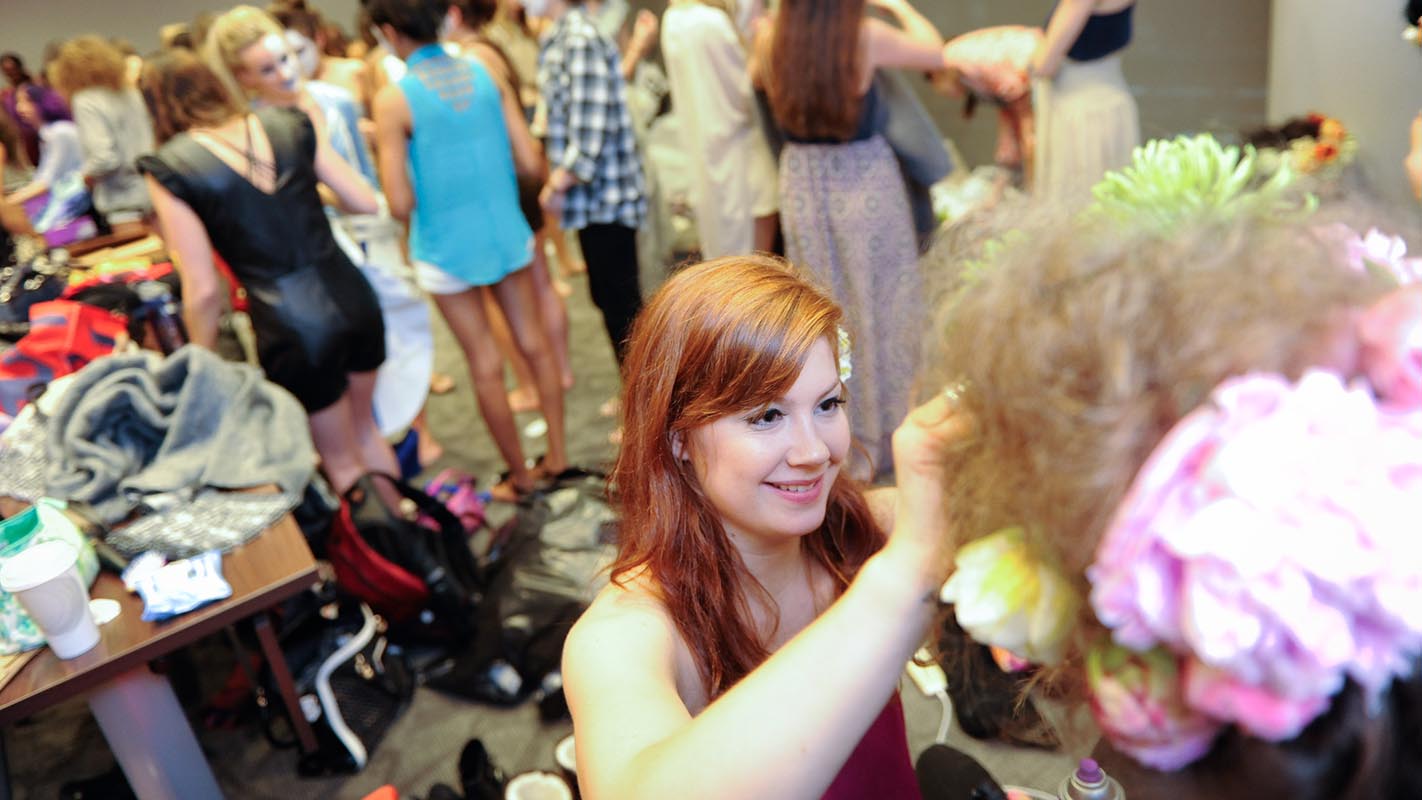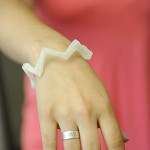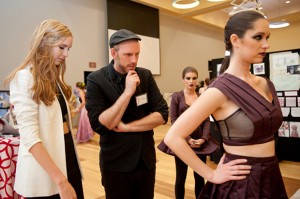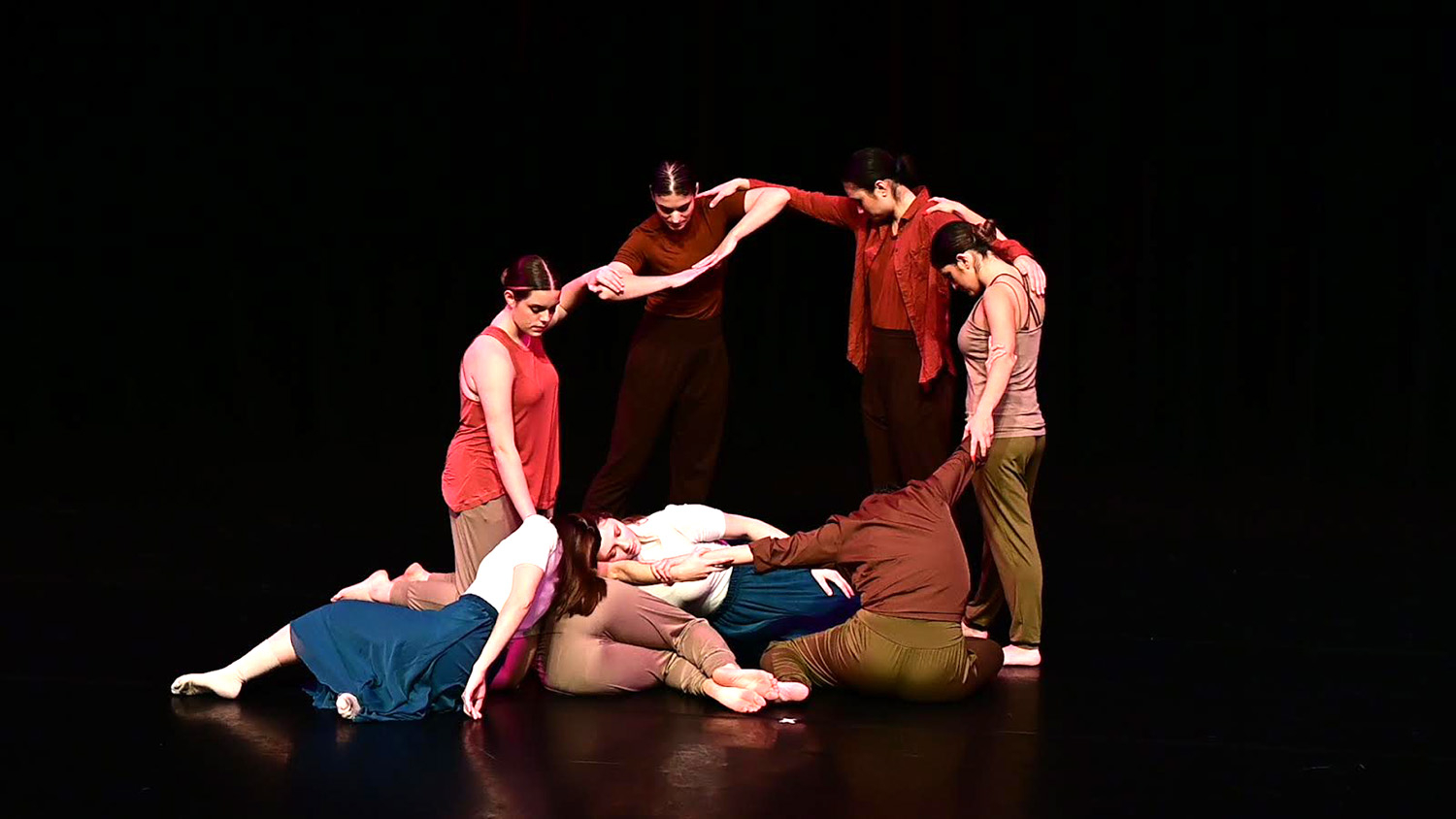Fashioning Solutions

High design meets high-tech tools and heavy-duty materials at Art2Wear, an annual fashion showcase for NC State design and textiles students.
In this year’s collections, 3D printers, laminate flooring components and automotive primer took their place alongside sewing machines, needle and thread, and dyes.
Senior art + design major Gillian Paige’s collection utilized nontraditional materials and unusual modes of manufacturing. When she started working on the first dress in her collection, she incorporated a foam typically used as a sublayer beneath laminate flooring.

“The guys at Home Depot gave me a funny look when I picked it up and told them what I was using it for,” Paige said.
The foam was too thick and heavy to sew through, but she found another place for it elsewhere in her collection. The lessons of that first piece informed her subsequent efforts. Seeking a similar effect for a jacket, she replaced the foam with pellon, a lighter polyester material used in quilting.

Paige turned to a cutting-edge tool to make necklaces and bracelets for her runway models to wear: the 3D printer in the Makerspace at Hunt Library. She worked with fellow art + design student Andrea Danchi and industrial design student Will Marrs to create digital versions of her jewelry for the printer to use.
Once the printer had created her jewelry, painting and sizing it posed a challenge, but Paige came up with a solution: She used the aforementioned automotive primer and metallic paint to put a chrome finish on the plastic pieces.
“I was amazed I was able to have jewelry after one day from the 3D printer,” Paige said. “I think they turned out really amazing.”
Science meets fashion
Senior Sarah Cannon is equally immersed in both art and science. Some of the funding for her Art2Wear collection came from a National Science Foundation grant that’s also supporting research in chemical and biomolecular engineering.
The engineering side of that project focuses on creating two-dimensional materials that fold themselves into three-dimensional shapes when they’re exposed to heat and light. Folding was a major theme of Cannon’s collection.
“I was trying to figure out a way that these materials could fold around themselves on top of the human body and have their own self-movement,” Cannon said.

As an Anni Albers Scholar, Cannon is working toward two degrees, one in art + design and one in textile technology. Shuttling back and forth between studio-based courses at the College of Design and research labs at the College of Textiles has given her a unique perspective on the relationship between materials and fashion.
“I’m learning how to design textiles, how to knit and weave them,” she said. “And in my studio-based design courses, I’m using them to bring my (fashion) ideas to life.”
The couture and craftsmanship evident in this year’s collections present a sharp contrast with Art2Wear’s early years, said faculty advisor Katherine DiuGiud. Now an assistant professor of art + design, DiuGiud was a design student and Art2Wear participant in the mid-2000s. She remembers seeing dresses held together with staples back in those days.
The artistic and technological advances made in students’ collections since then are a reflection of NC State’s focus on experiential education, Paige said.
“The College of Design always pushes us to find new ways of doing things, to look for new materials,” she said.
- Categories:


